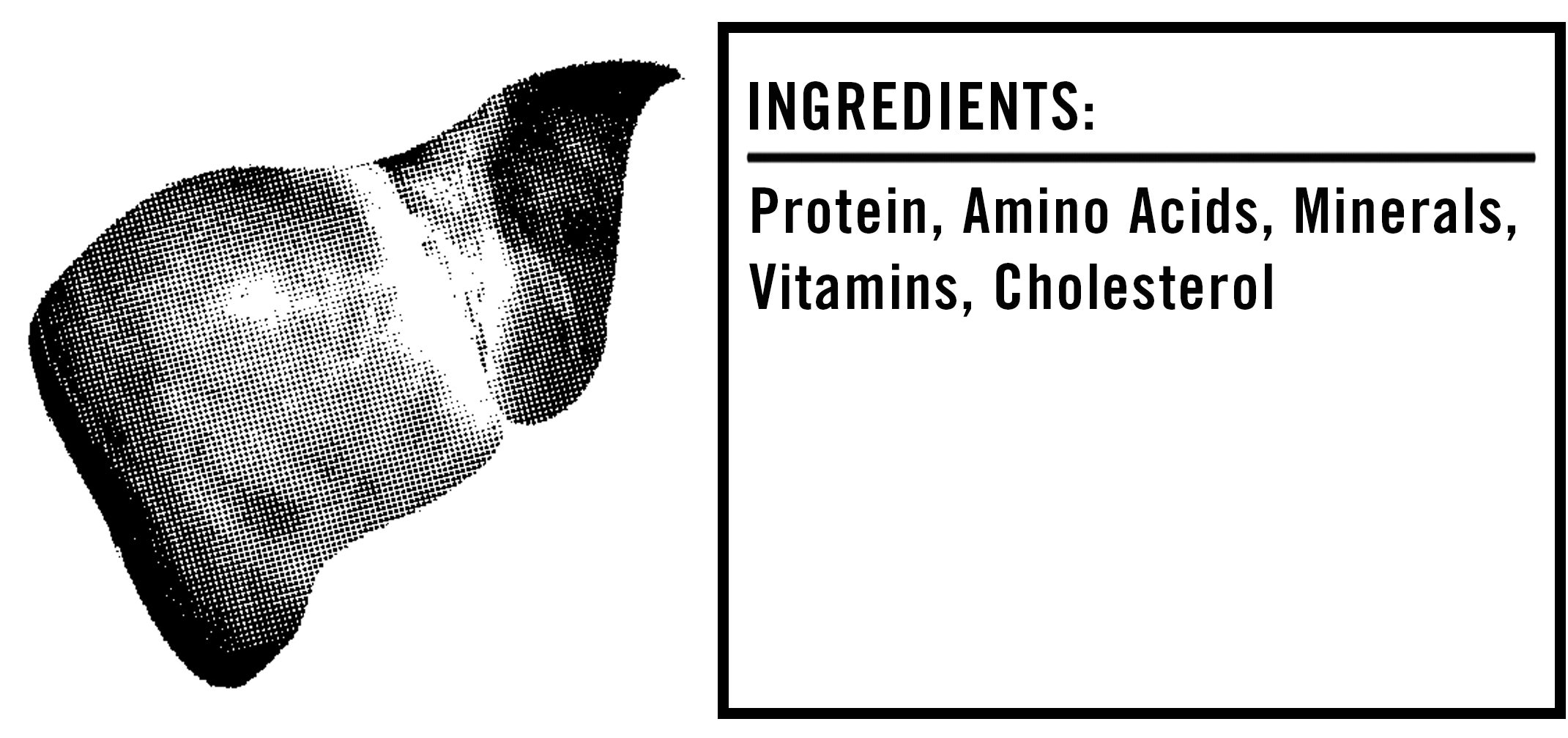We’re often told that you should never eat anything (or put anything on your body) if you don’t recognize everything on the ingredients list. But since most of us have no idea what xanthan gum or potassium benzoate are — or more importantly, what they’re doing to our bodies — we’re decoding the ingredients in the many things Americans put in (and on, or near) themselves.
In the name of Halloween, this week we’re devoting the column to exploring the only cuisine beloved by both dedicated gourmands and zombies: Organ meats. Since these are intrinsically single-ingredient foods, rather than analyzing the individual ingredients as we normally do, we’ll be examining them based on nutritional value and the like.
This edition: Chicken livers, which have been dissected down below. First, though, while Boomers grew up on liver and onions, I think we can all agree that organ meats in general have fallen out of favor in the U.S. Hell, I remember back in the 1990s when Doug brought our communal distaste for liver and onions right into our living rooms. But while we enjoy our muscle meats, hígado de res encebollado remains popular all throughout Latin America, and those indulging could end up much, much healthier as a result.
For proof, come along and check out the stats on chicken livers.

The Ingredients
1) Protein: Like many other organ meats, chicken livers are a lean, dense source of protein — one serving (about three and a half ounces) boasts approximately 26 grams, which should be enough to convince a meathead to blend up a couple and drink them in shake form. That same portion of chicken liver contains only 172 calories and just over six grams of fat — for comparison, a chicken drumstick of the same size (with the skin on) delivers 216 calories and over 11 grams of fat.
2) Amino Acids: Chicken livers contain all nine essential amino acids, the building blocks of proteins that play all kinds of essential roles throughout the body. More than any other amino acid, though, chicken livers provide over 100 percent of the daily recommended amounts of phenylalanine, which bolsters the production of dopamine and norepinephrine, hormones that improve our mood.
3) Minerals: Chicken livers are decent sources of several minerals — copper and phosphorus, included — but they boast notably high doses of iron, zinc and selenium. Iron is a vital component of hemoglobin, a protein needed to transport oxygen in the blood throughout the body and give us energy. Zinc, meanwhile, helps with wound healing and reinforces the immune system. Finally, selenium helps with reproduction and protects the body against free radical damage.
4) Vitamins: While chicken livers are a source of all the B-complex vitamins — which help the body in a variety of ways, ranging from increasing energy production to improving the formation of red and white blood cells — they boast an especially high dose of B12 and B9. In fact, one chicken liver contains about seven and a half micrograms of B12, which is substantially more than the two and a half you need on a daily basis. Vitamin B12 helps create DNA, keeps your nerves and blood cells healthy and prevents megaloblastic anemia, which makes people tired and weak. B9, meanwhile, helps with fertility and to prevent certain birth defects, although pregnant women should generally avoid liver altogether, as too much vitamin A can harm your baby.
Speaking of which, chicken livers are a decent source of Vitamin A, too, which helps eye health and the production of white blood cells. In fact, chicken livers contain so much vitamin A — more than twice the daily recommendations for both men and women — that even for those who aren’t pregnant, they should only be consumed on an occasional basis, rather than, say, for every meal, since too much vitamin A can prevent the body from absorbing vitamin D, which could result in you becoming pretty depressed.
But then again, eating chicken liver for every meal would probably do that, too.
5) Cholesterol: Like many organ meats, chicken livers are high in cholesterol, a fatty substance found in blood that tends to gather in vital organs. One serving contains 564 milligrams of cholesterol, which is almost twice the daily recommended amount. Cholesterol is a complex and disruptive subject among nutritionists, however: Many hold that too much of the stuff, especially in people sensitive to dietary cholesterol, is a major risk factor in the development of heart disease. On the flip side, more recent studies suggest that cholesterol has no impact on the development of heart disease whatsoever. Still, the general consensus seems to side with the “cholesterol-is-bad” group, and when the consequences are as serious as heart disease, you might as well keep a close watch on your cholesterol intake.
The Takeaway
Liver is arguably one of the most nutrient-dense foods on the planet, and since organ meats have fallen out of favor, it tends to be pretty cheap, too. According to some chefs, chicken liver also resembles more traditional meats in texture and flavor than other organ meats, which are generally kinda tough.
Finally, if the thought of eating a whole chicken liver freaks you out, maybe try it in pâté form first, which can help hide any unusual texture or flavors. After all, you gotta work your way up to that liver and onions life.

